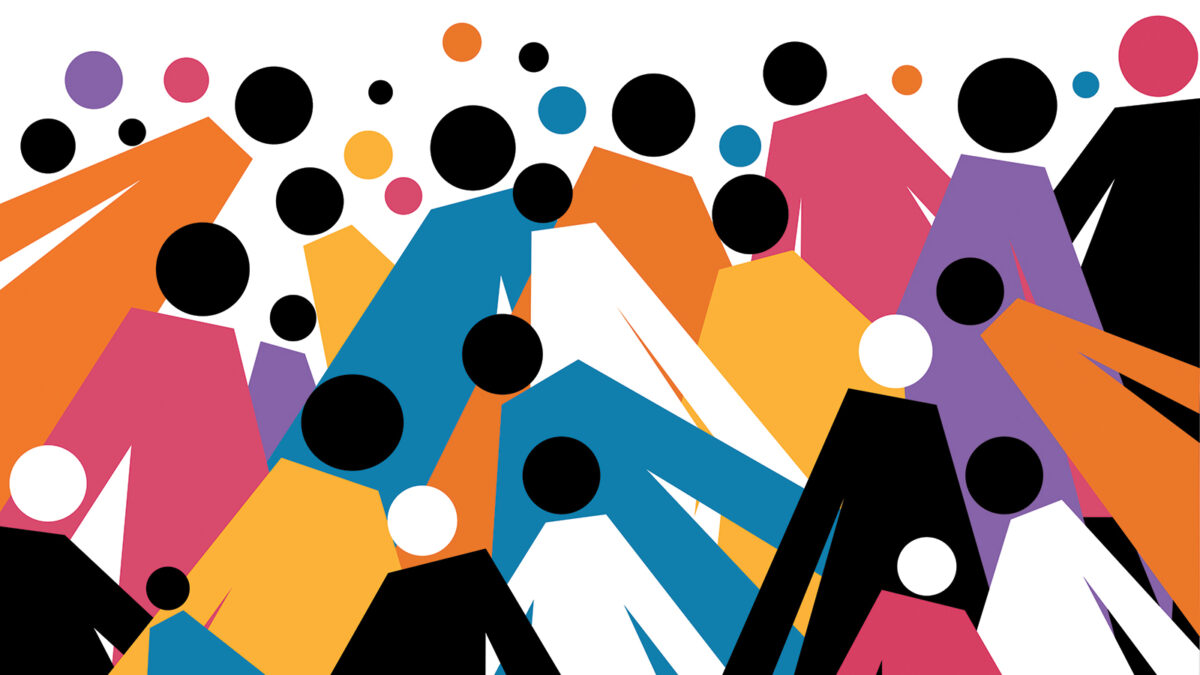
Confronting Strong Emotions
September/October 2024
Download This Article (.pdf)
Most attorneys, whether newly admitted to the bar or senior members of it, struggle from time to time with managing the stress of their practice. New attorneys face the daunting task of finding their professional footing, whether by securing their first position or acclimating to it. Attorneys in their early years of practice face the challenges of representing client interests, whether in court or on paper. Attorneys within their first decade or two of practice may weather changes in their firms or legal fields, finding themselves at professional crossroads. More senior attorneys may decide to transform their careers by transitioning into the judiciary or management.
No matter the changes over time, a few challenging emotional themes may stand out in an attorney’s career. The first is fear. The second is shame. The third is anger. Science demonstrates that these emotions are not only emotionally consequential, but that each emotion also negatively affects executive function, hampering our ability to do our best work. Attorneys help themselves and each other by acknowledging that their careers might include heavy doses of these emotions and by finding ways to spot their triggers and even helping others through theirs.
Loosening Fear’s Harmful Grip
Fear is the common feeling surrounding the unknown, and for attorneys it may be triggered often.1 Fear can enter an attorney’s life in a constant flow—the threat of losing cases, missing deadlines, and confronting difficult clients and opposing counsel can be persistent and overwhelming. Attorneys can experience long-term harm from living in states of fear over long periods of time.
Fear is experienced in the mind, but with strong physical reactions in the body. As soon as you recognize fear, your amygdala (small organ in the middle of your brain) goes to work. It alerts your nervous system, which sets your body’s fear response into motion. Stress hormones like cortisol and adrenaline are released. Your blood pressure and heart rate increase. You start breathing faster. Even your blood flow changes—blood actually flows away from your heart and into your limbs, making it easier for you to start throwing punches, or run for your life. Your body is preparing for fight-or-flight. As some parts of your brain are revving up, others are shutting down. When the amygdala senses fear, the cerebral cortex (area of the brain that harnesses reasoning and judgment) becomes impaired, making it difficult to make good decisions or think clearly.2
Given fear’s impact on our mind and body, attorneys should develop strategies and tactics to protect themselves, practicing as many modalities as often as needed to limit its harmful effects. A frank self-assessment of our own emotional vulnerabilities can provide a guide to the source of our fears. A desire to strengthen ourselves against vulnerabilities can guide us to study, to professional assistance, and to positive maintenance.
Fear can motivate us toward advancement or paralyze us in despair. Being conscious of our oft-companion, we should be motivated to learn from this teacher.
Disarming Shame With Empathy
Shame is defined generally as a feeling of embarrassment or humiliation that arises from the perception of having done something dishonorable, immoral, or improper. While shame is a negative emotion, its origins play a part in our survival as a species. Without shame, we might not feel the need to adhere to cultural norms, follow laws, or behave in a way that allows us to exist as social beings.3
Attorneys can experience feelings of shame on their own accord, or commonly, on the explicit or implicit suggestion of others. These instances can be common and demoralizing. Self-shame occurs when attorneys chide themselves in the moment, in advance, or belatedly for feelings of inadequacy or loss. From others, attorneys can feel shamed during litigation—for example, if they are chided from the bench, from comparative feelings of not having achieved as quickly or publicly as their peers, or even from a negative online review, whether merited or not.
Shame is unlike guilt, which propels people to change. Shame can keep people stuck, thus requiring more attention and resources to seek positive results. The “Compass of Shame Scale” was developed to assess four “shame-coping” styles: (1) attack self (self-disparagement, masochism); (2) withdrawal (self-isolation); (3) attack other (lashing out verbally or physically, blaming victims); and (4) avoidance (denial, abusing drugs and alcohol, distraction through thrill-seeking).4
Virtually everyone feels or exhibits one or more of these responses every time a positive affect is interrupted. The key is to maximize positive affect, minimize negative affect, express affect freely and do as much of all three as possible.5
“Affect,” in psychology, refers to the underlying experience of feeling, emotion, attachment, or mood.6 Shame is defined as the reaction to any interruption of a positive affect.7
Attorneys should recognize that even accidentally or unintentionally triggering shame in another can cause a deep wound. We have innate needs for approval and support from our communities. Attorneys can create for themselves and others a safe environment to make mistakes while maintaining their dignity. Empathy goes a long way to help a peer whose executive function has been hijacked due to shame. A friendly recess, an arm around the shoulder, or a word of grace or sympathy are simple acts that could help an attorney cope with shame and not get swept up in a spiral of negative emotions.
Quelling the Physical Effects of Anger
Anger is an extremely powerful emotion in the moment, causing immediate physical reactions. The adrenal glands flood the body with stress hormones, such as adrenaline and cortisol. The brain shunts blood away from the gut and toward the muscles, in preparation for physical exertion. Heart rate, blood pressure, and respiration increase, the body temperature rises, and the skin perspires.8
Attorneys may face anger often, whether by way of a client’s disappointment, opposing counsel’s reactions, or a decision-maker’s reflections of their unmet expectations. On top of this, attorneys must manage their own anger, be it from their own internal obstacles or those they have with others. Anger not only threatens an attorney’s well-being but also negatively affects their performance. Chronic anger is a significant health hazard that includes increased susceptibility to heart attack, stroke, diabetes, insomnia, and weakened immune systems.
Anger must first be dealt with by calming down the physiological reaction of fight, flight, or freeze. Going from standing to sitting begins to settle the body. The next goal is to deliver oxygen to the brain from where it is being diverted to the body (to the fists, for example, to prepare to throw a punch). Deep breathing is one way to immediately accomplish this. Once the brain turns off its threat detection, the frontal lobes can be relied on again to help with critical thinking, problem solving, and reasoning.
Anger can be expressed in many ways, including acts of impatience, intolerance, and intimidation. Anger can be expressed in passive-aggressive ways, such as by sabotaging a case or project through procrastination and intentional mistakes. Anger can be actionable, as in physical assault or defamation. Anger can be given and received many times over in an attorney’s daily existence. Attorneys must stay vigilant to reduce unrealistic expectations of themselves and others and must continually strive to improve how they address anger in the moment and anger as subject.
Practicing Patience for a Healthier Profession
The healthy attorney seeks a holistic approach to these common stressors. Relying on oft-recommended tools of exercise and mindfulness is always recommended. At the same time, attorneys especially must exercise patience as a go-to tool in their toolbox for survival. With patience, we can study our fears and find ways to overcome them. With patience, we can give ourselves grace in the moment and remember that failures represent lessons, without which we would remain green in our careers and our emotional growth. Even the angriest attorneys can be our best teachers, demonstrating that when a normal emotion is not expressed positively, its effects can be devastating for the person and everyone in their orbit.
Knowing that all attorneys are victims of these powerful emotions binds us in our survivorship of these feelings. Knowing that one act of kindness can turn around another attorney’s day or week or career should empower us to give freely of our empathy and soothe others the way we wish we could soothe ourselves in our moments of difficulty. Making it a practice to offer peace and patience to those who cross our paths may reduce the toll of the onslaught of these difficult feelings in our day-to-day lives. Discovering our own triggers and taking small steps to minimize them may offer the same benefit.
Related Topics
Notes
1. For an in-depth review of this topic, see Lande, “Escaping From Lawyers’ Prison of Fear,” 82 UMKC L. Rev. 485 (Winter 2014).
2. Northwestern Medicine, “Five Things You Never Knew About Fear” (Oct. 2020), https://www.nm.org/healthbeat/healthy-tips/emotional-health/5-things-you-never-knew-about-fear.
3. Cibich et al., “Moving Beyond ‘Shame Is bad’: How a Functional Emotion Can Become Problematic,” 10(9) Soc. Pers. Psychol. Compass 471 (Sept. 2016).
4. Nathanson, Shame and Pride: Affect, Sex, and the Birth of Self (Norton 1992).
5. Tomkins, Affect Imagery Consciousness (Springer Pub. 1991).
6. Psychologist Silvan Solomon Tomkins developed the “affect theory,” identifying nine named affects: interest excitement and enjoyment-joy; surprise-startle; distress-anguish; anger-rage; fear-terror; disgust; dissmell; and shame-humiliation. Id.
7. Id.
8. “Anger—How it Affects People,” Victoria, Australia State Government, Department of Health, https://www.betterhealth.vic.gov.au/health/healthyliving/anger-how-it-affects-people.


